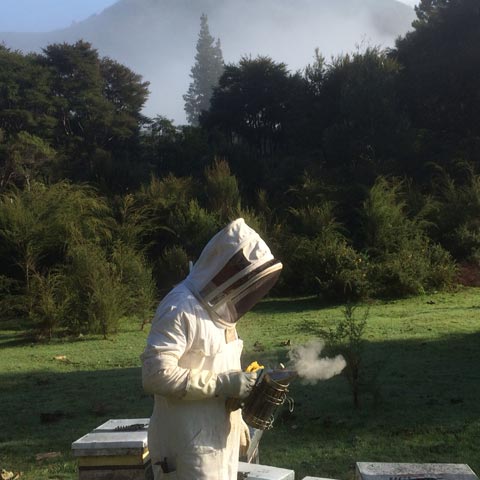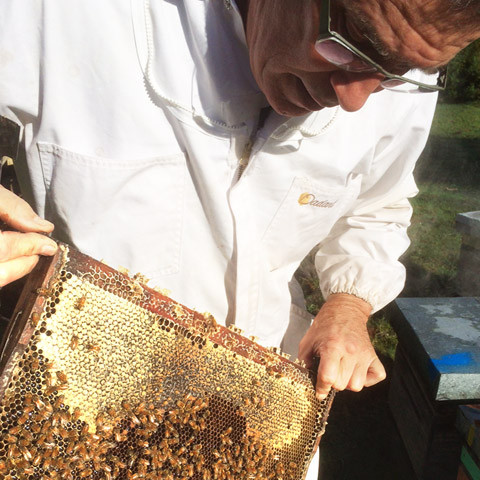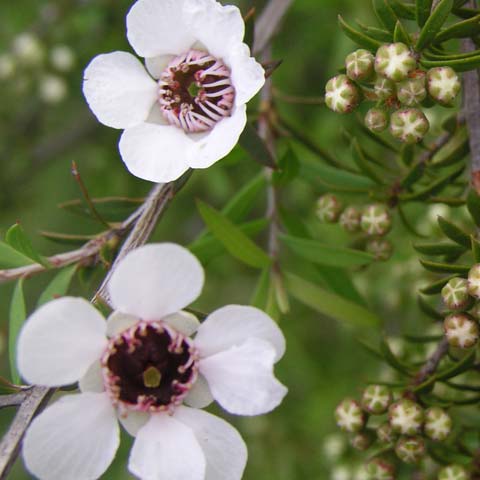Bees have been making honey for about 10–20 million years. The ancient Egyptians used honey to embalm their dead, and Alexander the Great was buried in white honey.
Bees
Native Bees
New Zealand has 28 native bee species, compared with 925 in Australia. Most are small, have little colour, and live in solitary burrows (although in some species the burrows may be clustered together). They are effective pollinators and are often found on mānuka (Leptospermum scoparium) flowers. However, although they collect and store nectar, they do not produce honey in commercial quantities.
Introduced Bees
Mary Bumby, the sister of a Northland missionary, was probably the first to introduce bees to New Zealand. She took two hives with her from England aboard the James, in March 1839, to the Mangungu Mission Station in Hokianga Harbour. Bees were also brought by the Reverend Richard Taylor, William Cotton, Lady Hobson and James Busby in 1843. The introduction of bees to the Bay of Islands is attributed to Bishop Pompallier.

Native versus introduced bees
Native bees usually get nectar from flowering native plants, while introduced bees visit other flowers. Native plants have disappeared from some areas because of land development; so native bees have had to find other sources of nectar and pollen. However, there does not appear to be any direct competition between the species for these resources.
Honey
Gathering honey and pollen
The natural instinct of bees is to gather pollen and nectar to produce and store honey as food, especially for winter, when few flowers are around. If a person removes some of the honey the bees are driven to produce more.
A busy hive may store more than 150 kilograms of honey in a year. More than 20 kilograms of this is needed to sustain the hive through winter. In a year, much more honey and pollen are consumed by bees than is stored.

Domestic hives
The most common domestic hive is the movable Langstroth type, made up of stacked boxes. Each box contains tray-like frames made of wax or plastic, which slide in vertically and provide a base for the wax honeycomb cells.
Honey is deposited in the upper boxes, and the lower boxes house the queen and most of the bees. After the beekeeper has removed the honey, the frames are usually returned to the hive so more honey can be deposited.
Manuka Honey
An even sweeter little history lesson
The "champagne" of honey, Manuka Honey's story introduces elements of Maori culture and tradition.
Maori in New Zealand have for century’s known the therapeutic and medicinal value of all things pertaining to the Manuka plant.
As Maori, we are pleased that the rest of the world can now take advantage of our Rongoa, Maori Medicine, in its many forms, especially manuka honey.

With Rongoa Maori have always worked with all that nature provides and the combination of Manuka and Honey is no exception. The bark, the sap, the leaves and the oil are used extensively in our Rongoa in both application and imbibing.
Manuka Honey's benefits were not lost on the early explorers of Aotearoa.
Captain Cook, the explorer and exceptional cartographer understood the benefits of Manuka in maintaining good health. When his ship the Resolution was laid up in Fiordland, Southern New Zealand, in the late 1700’s he encouraged his crew to make an invigorating “Tea” with the leaves of the Manuka and it is from that experience that Manuka is now known as the “tea tree”.

The European bees, that now dominate the landscape in New Zealand, were first introduced in the early 1800’s however we as Maori have a long and ancient practice of gathering Honey and Pollen from the many native bees. This information and process is still held in our Wananga, ancient schools of learning, and practiced in our Waitaha families.